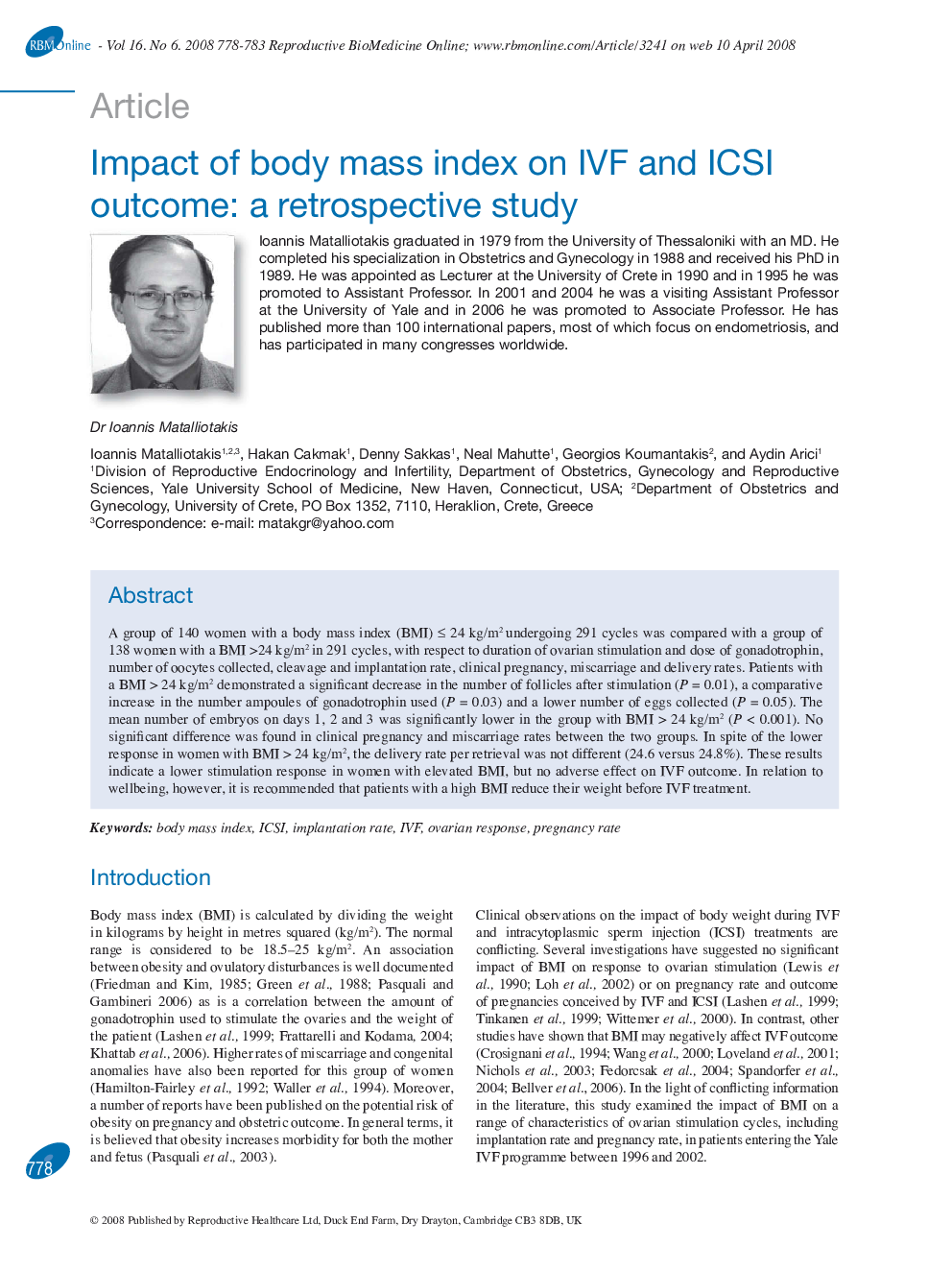| Article ID | Journal | Published Year | Pages | File Type |
|---|---|---|---|---|
| 3972471 | Reproductive BioMedicine Online | 2008 | 6 Pages |
A group of 140 women with a body mass index (BMI) ≤24 kg/m2 undergoing 291 cycles was compared with a group of 138 women with a BMI >24 kg/m2 in 291 cycles, with respect to duration of ovarian stimulation and dose of gonadotrophin, number of oocytes collected, cleavage and implantation rate, clinical pregnancy, miscarriage and delivery rates. Patients with a BMI > 24 kg/m2 demonstrated a significant decrease in the number of follicles after stimulation (P = 0.01), a comparative increase in the number ampoules of gonadotrophin used (P = 0.03) and a lower number of eggs collected (P = 0.05). The mean number of embryos on days 1, 2 and 3 was significantly lower in the group with BMI > 24 kg/m2 (P < 0.001). No significant difference was found in clinical pregnancy and miscarriage rates between the two groups. In spite of the lower response in women with BMI > 24 kg/m2, the delivery rate per retrieval was not different (24.6 versus 24.8%). These results indicate a lower stimulation response in women with elevated BMI, but no adverse effect on IVF outcome. In relation to wellbeing, however, it is recommended that patients with a high BMI reduce their weight before IVF treatment.
